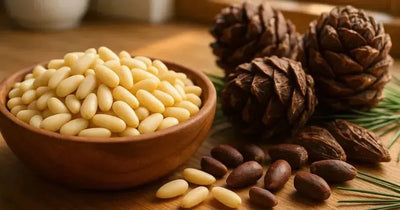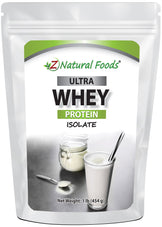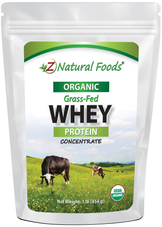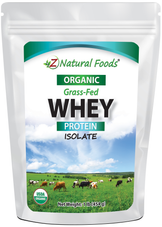Description
Description
To answer the question, “Which is better between pea protein and whey protein?” correctly, it is essential first to define what the term “better” means and its relationship to specific foods that may affect your overall well-being.
In the case of these particular proteins, better can be defined based on the various factors attributing to their nourishing qualities.
So, we must look at these factors and their specific effects when accurately defining the term “better” in this particular context.
When looking at the foundation of human health, the macronutrient protein is at the top of that list. Whether building healthy muscle tissue or supporting a wide array of essential bodily functions, vital amino acids found in various forms of protein are the critical building blocks to support these foundational aspects and necessary processes. Before we discuss the difference between Pea and Whey proteins, it is essential to understand some basic protein facts.
Here are some facts about proteins and amino acids:
- There are 20 different amino acids that your body needs for various functions.
- Eleven of the twenty are produced by the body, called non-essential amino acids, and we must get the other nine(called essential amino acids) from food because the body can’t produce them.
- Amino acids are organic compounds and building blocks your body uses to make protein.
- A food is considered a complete protein when it contains all nine essential amino acids in appropriate ratio amounts(Histidine, Isoleucine, Leucine, Lysine, Methionine, Phenylalanine, Threonine, Tryptophan, and Valine). However, a food can be considered an incomplete protein if one or more of the essential amino acids are insufficient, even if all nine EAAs are present.
Here is what we know about basic physiology and protein metabolism:
- Proteins are not stored for later use.
- The body converts excess protein into glucose or triglycerides to supply energy or build energy reserves.
- When we eat a complete source of protein, the body breaks it down into amino acids to create muscle protein, along with a host of other proteins, for enzymatic(Enzymes are essentially protein molecules)reactions.
- The nine essential amino acids also act as regulatory signaling molecules.
Finally, it is also essential to understand the difference between denatured and undenatured protein:
- Denatured protein is the alteration in the folding pattern of a protein by heat or chemical reaction from its original formation. Protein function depends on its structural shape, and heat causes proteins to vibrate, weakening the bonds that hold their complex shape.
- Undenatured proteins are pure, properly functioning proteins without structural deformation, with all bioavailable nutrients and constituents.
Therefore, we should avoid using the term “unprocessed” to define an undenatured protein because everything goes through some processing to create an end product. For example, protein isolates undergo a precise filtration process, producing an end product yielding more protein per serving.
It is also misleading when people say denatured proteins are unsuitable for us. A protein can become denatured through cooking with heat or some other process. For example, a hard-boiled egg is regarded as a form of denatured protein. The heat used to make a hard-boiled egg changed its structural integrity, but it still has excellent nutritional value and all the amino acids to create a complete protein.
Pea Protein
Pea protein is now used in various products, from protein bars and shakes to protein pancakes and oatmeal. It is also a source of essential amino acids, making it an excellent choice for those looking to increase their protein intake without relying on animal products.
On average, pea protein yields about 80% protein content. While it is mainly utilized as a concentrated product, pea protein is also available in different forms, including pea flour and pea protein isolate.
According to a paper titled The Current Situation of Pea Protein and Its Application in the Food Industry,
- Pea protein extraction requires selecting appropriate treatments to maximize yields and estimate functional, nutritional, and structural properties that affect their applicability in the food industry.
- Before protein extraction, pea seeds undergo pre-treatment steps such as cleaning, drying, sorting, dehulling, and splitting that allow the detachment of the hulls and the cotyledons from whole pulses; therefore, it facilitates protein extraction without affecting their techno-functional properties.
- The extraction method, pH, duration of solubilization, number of washes, ionic strength, solvation ratio, temperature, extraction equipment, and filtration or purification techniques are some factors that influence the efficiency of the extraction as well as the protein isolate characteristics.
Several extraction techniques are used to obtain pea protein concentrates and isolates.
- Wet extraction, or alkaline extraction, is the most frequently used conventional technique for producing pea protein isolates (highly concentrated protein fractions). This process uses proteins with high solubility under alkaline conditions.
- Dry fractionation or milling is commonly used to fraction protein into thin or delicate fractions (protein concentrate). In dry fractionation, dehulling of seeds is carried out as a pre-treatment because it reduces antinutritional factors, separates bitter or astringent components, and improves color, resulting in a slight increase in protein content. The principle behind dry fractionation is classifying flour into different particle sizes and the chemical composition after milling.
- Salt extraction This method extracts proteins from seed material in a salt solution at a neutral pH. It has the advantage of proteins' salting-in and salting-out phenomena, followed by a desalting process that reduces the ionic strength of the protein environment.
- Mild fractionation The mild fractionation process produces pea protein isolates using a hybrid approach method. Hybrid methods mean adopting specific steps from both dry and wet methods. In this process, the fine fraction of pea flour is immersed in water and then fractionated by a layer-by-layer separation by using centrifugation forces or additional purification to increase its purity (70–90 g protein in 100 g dry matter).
Pea seeds are rich in protein, carbohydrates, and some minerals, but their nutritional content depends on environmental and genetic factors.
- Pea seeds usually contain 20–25% protein, 40–50% starch, and 10–20% fiber.
- Pea protein can be classified into four major groups: albumin, globulin, prolamin, and glutelin. The majority are globulins (65–80%) and albumins (10–20%).
- Globulins are the main storage proteins and are soluble in salt solutions.
Pea protein
(BV) - 65
(NPU) - 89%
(PAAP) Complete protein high in BCAA’s
Low in cysteine and methionine
This chart is a good reference when comparing the amino acid profile of pea and whey proteins.
Whey Protein: Isolate vs Concentrate
Comparing a protein isolate and concentrate comes down to what you gain versus what you lose.
As stated above, protein powder concentrates are considered the closest end product for what nature intended to provide us as a high-quality source of protein with all cofactors and constituents available for a balanced and complete source of nourishment.
The term concentrate can be misleading as it implies that the consumer is getting a quantitatively more significant amount of protein. This is simply not the case. You are getting a more well-rounded end product with a greater spectrum of uses that may benefit overall well-being.
Protein isolates are a more refined product yielding a higher amount of protein with the goal of specific targeted actions and applications.
Generally speaking (using whey protein as an example), below are some of the primary, simple facts for what you get in an isolate and concentrate.
Whey protein Isolate
- A complete protein yielding 90% protein concentration
- It contains no fat and carbohydrates
- It is high in branched-chain amino acids(especially leucine).
- It is considered an undenatured protein; however, if the raw material company uses a filtration process that uses heating components, it may denature the protein.
- Because components like beta-lactoglobulin, alpha-lactalbumin, immunoglobulin, and lactoferrin are proteins by definition, contrary to popular opinion, whey isolate does contain these critical cofactors.
- Whey isolate may contain a tiny amount of lactose.
Whey protein concentrate
- A complete protein yielding 80% protein concentration
- Approximately 3 grams of carbohydrates and 2 grams of fat per average serving
- Whey protein concentrate has many components, like beta-lactoglobulin, alpha-lactalbumin, immunoglobulin, and lactoferrin.
- It is a quality source of Branched-chain amino acids(especially leucine)
- It is an undenatured protein
- Whey concentrate does contain lactose
Therefore, the difference between whey protein isolates and concentrate comes down to:
- The amount of protein, carbohydrates, and fat you get from the product.
- The intrinsic details about the conditions under which the product is produced to create the end product.
- The individual’s specific goals.
Whey protein
(BV) concentrate (cow and goat) is 104 vs. Isolate is 140
(NPU) concentrate (cow and goat) is 80-85% vs. Isolate 90-92%
(PAAP) concentrate (cow and goat): complete protein high in BCAA’s, specifically Leucine
Isolate: complete protein high in BCAA’s, specifically Leucine
What is the difference between pea and whey proteins?
While both protein sources are highly versatile functional foods that supply ample amino acids, they are very different foods.
While pea protein contains all nine essential amino acids (exceptionally high in the BCAA’s), it is low in methionine, creating an imbalanced amino acid profile, so it is not an actual complete protein.
Adding some rice protein would be in your best interest to create a more balanced amino acid profile.
Remember that a food can be considered an incomplete protein if one or more of the essential amino acids are insufficient, even if all nine essential amino acids (EAAs) are present.
How insufficient is defined in the above case is through the amino acid score. The score is calculated by dividing the content of individual EAAs in food protein by the content of the same amino acid in the reference pattern.
Whey is a complete protein and a complex nourishing food containing quality fats (if using the concentrated version) and nourishing compounds like beta-lactoglobulin, alpha-lactalbumin, immunoglobulin, and lactoferrin.
So, Pea vs Whey Protein: Which is better?
In the end, based on factors like functionality, nutritional quality, digestibility, and versatility, whey protein is the superior choice.
For more information about our Organic Pea Protein, go here: Organic Pea Protein
































